Situated in a small valley at the top of a mountain ridge, Dali village is home to a Dong ethnic group whose local history can be traced back to the early Ming dynasty approximately six hundred years ago. The village is in Qingdongnan, at the south-east corner of Guizhou province. In this area, the mountainous and difficult terrain has allowed various ethnic groups to settle in sites that have allowed communities to maintain a degree of cultural autonomy and isolation. The Dong people’s primary cultural markers are their spoken language, handmade textiles and dress specifically to their community, an ethereal style of chorus singing, and chuān dòu (穿斗) style timber architecture.
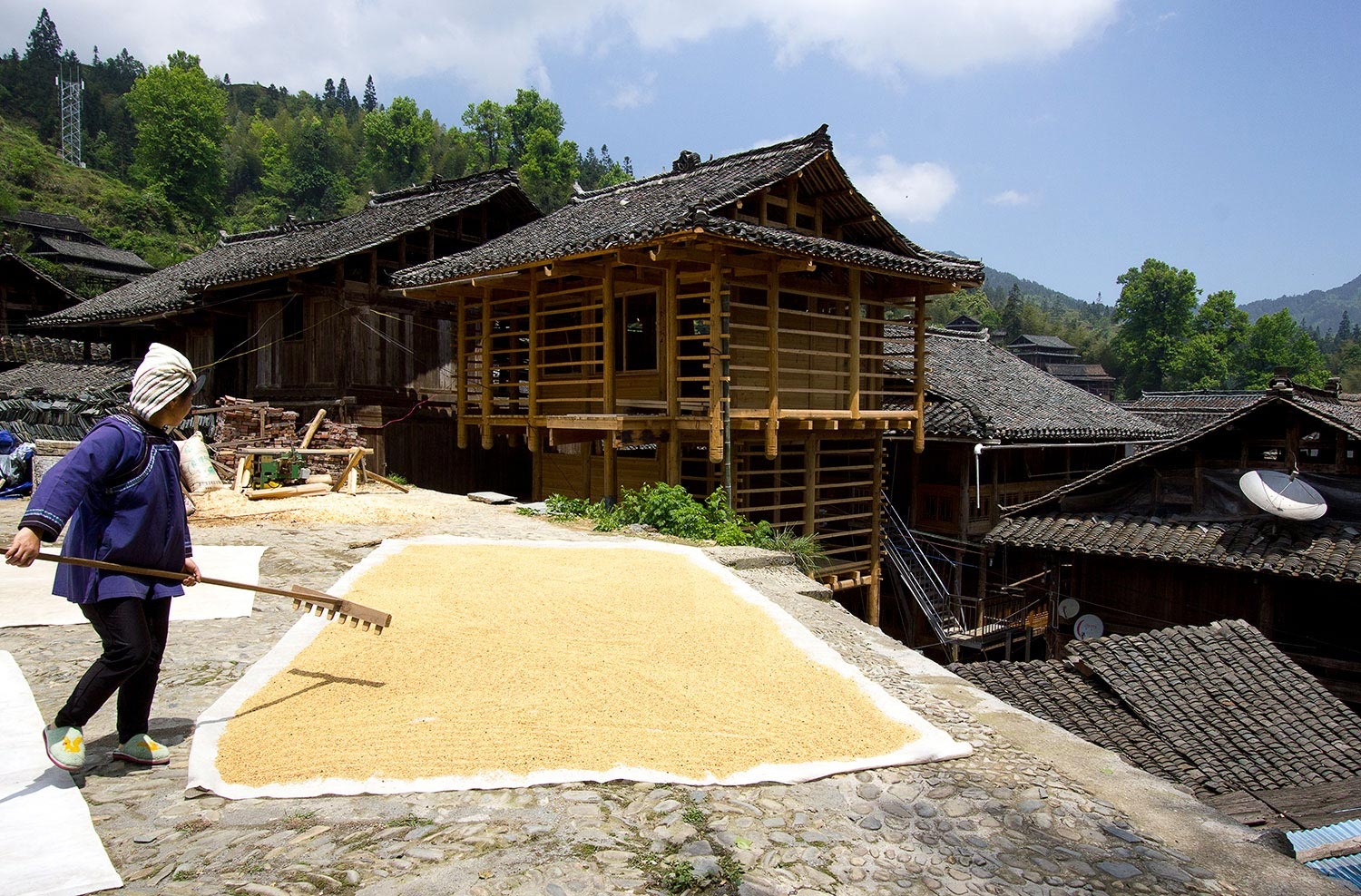
In the spring of 2016, a road was completed that linked Dali up to a new regional network of infrastructure aimed at economic development and growing the eco-tourism sector. At the foot of the new road, a large billboard has sprung up that reads, “Welcome to Dali.” Its arrival presaged the flood of tourists that have started to arrive in the village. Prior to this, the international NGO, The Global Heritage Fund (GHF), was invited to Dali by regional officials to work with the community on both tangible and intangible heritage conservation. To that end, GHF and Beijing based studio, ATLAS, partnered in 2016 to work with craft traditions in the village and to envision future cultural trajectories for Dali.
The Dong community in Dali has strong existing cohesion and is comprised of individuals who possess a clear vision of a way of life that centres on traditional agriculture and cultural practice. However, the growing influence of external material and capitalist forces in the village can be seen and felt as they transform definitions of life and livelihood for those in Dali. Many in the younger generation have migrated out of the village in search of work and higher incomes, intergenerational knowledge transfer is slowly failing, and the new tourist economy is rapidly changing the local social and economic balance.
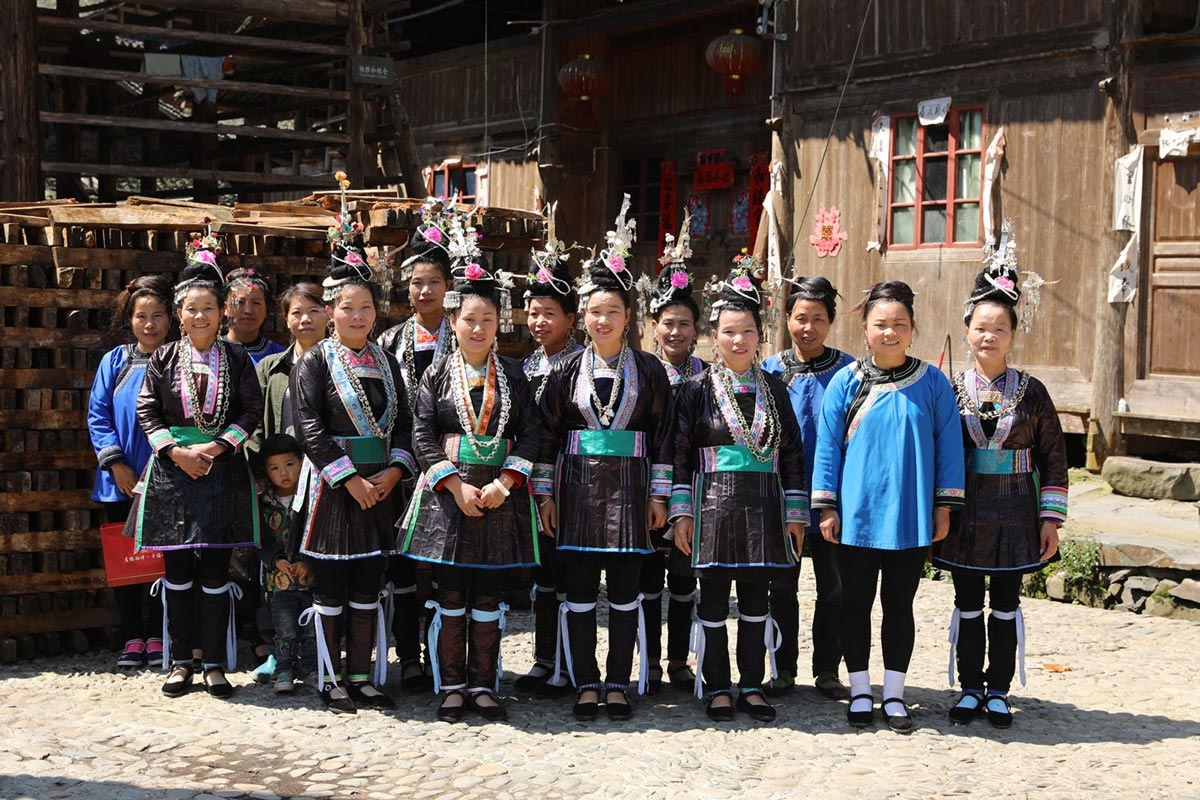
In response to these challenges, GHF, ATLAS, and the villagers have come together to create an initiative that imagines a new kind of cultural institution for Dali. Key to this has been the creation of new economic incentives that will support the continuation of craft production. This has led to the ongoing development of a women’s textile co-op and the design and building of a new textile centre to house their activities. While the project has engaged numerous forms of disciplinary knowledge, a majority of the work has focused on building relationships of collaboration and trust through the exchange of ideas, knowledge, and resources. The design artefacts that have emerged from this process reflect the negotiation of contemporary and traditional value systems and carry within them the imperfect narratives of a place in transition.
Outside the back door of every kitchen in the village sits an indigo dye bath. While those in the younger generation have migrated to cities outside the village for work, the older women are remaining in Dali weave, dye, and embroider textiles in parallel with other daily tasks. They do not do this work to sell in an outside market for a profit but instead engage with it as an act of care for themselves and their families. In other words, these textiles are not typically viewed as objects of trade but rather as works of individual expression.
Currently, the flow of this knowledge from generation to generation has begun to fade as the perceived relevance of the textiles themselves loose power and context in a flood of modern cultural offerings. Envisioning contemporary uses for these textile practices and linking up the products with an external audience creates a new trajectory and energy source for this community of makers. The work of building the co-op is to gather as a group, rather than as individual artisans, to share resources, knowledge, and planning to reach these outside markets. This requires a breaking down of barriers and new forms of collaboration—as well as new leadership— to create an enterprise that will foster the integrity and continuation of these traditions while providing the women with the economic support to do so.
Read more about ATLAS's textile projects
In the steep valley, the public plaza is the largest piece of flat, open land available for common use; it is a space to dry rice or other harvest crops or to hold large banquets. The tallest structure in Dali is the drum tower, which rises from the public plaza where its current role is mainly ceremonial. Before local Dong governance was replaced by the communist party system, the tower was both the ‘council shed’ and site of collective decision-making, as well as a space for holding essential village rituals. At the other end of the plaza is the Sax altar (pronounced sā), a rock cairn filled with tall wild grasses, it is the metaphysical home of the grandmother goddess who holds in her spirit the past, present, and future fate of the village.
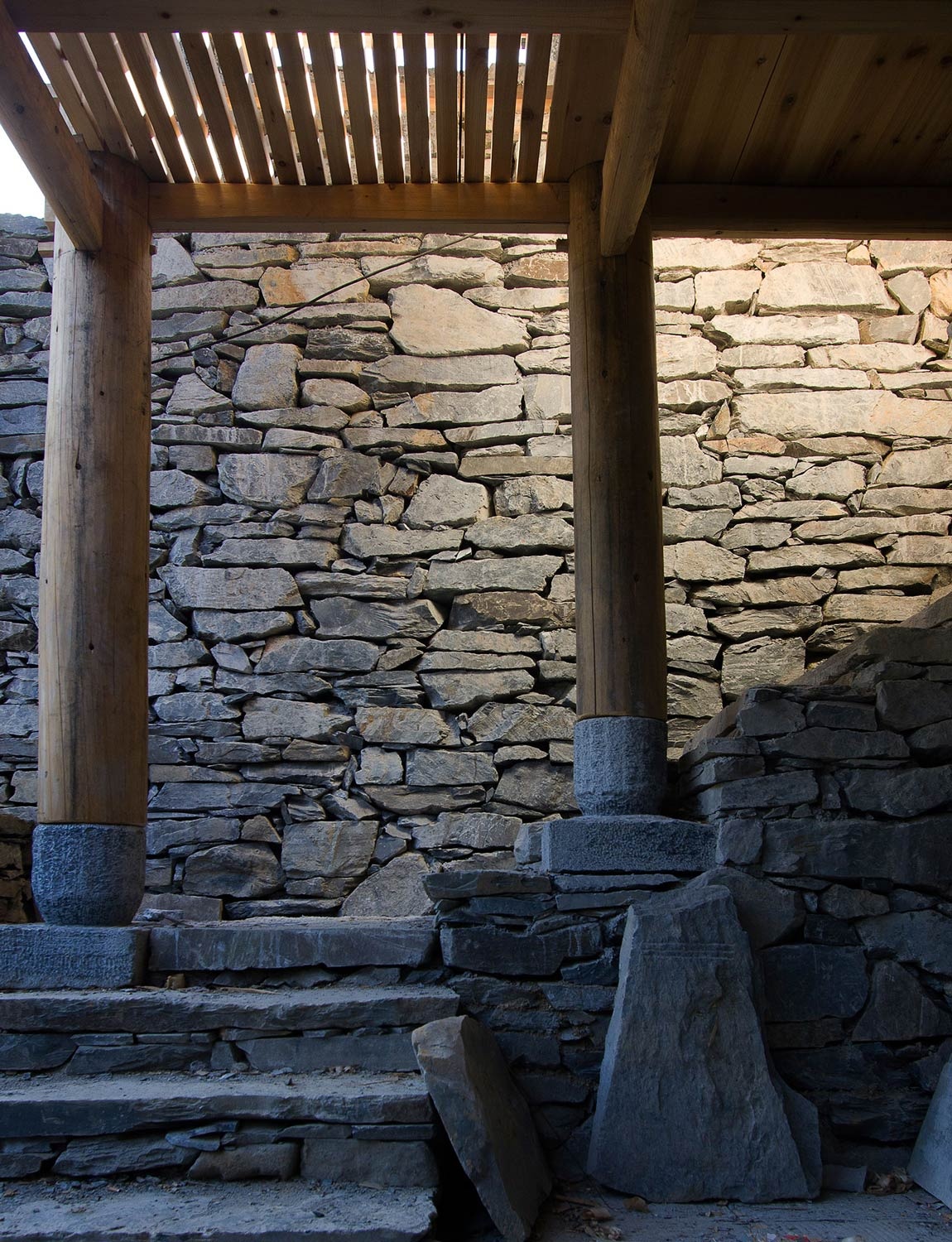
The new textile centre is sited at the edge of the plaza, giving it both a highly visible and central location in the village. Space is intended to create a bridge between the local community and visitors to Dali and as such adopts a posture of transparency and openness. The building’s architectonics were derived in collaboration with both a master carpenter from Dali, skilled in Dong building traditions, and artisans versed in local stonework, including one individual whose work primarily focuses on tomb-carving. The innovative impulse in the overall design of the building came through the process of adapting traditional building methods to contemporary programming, such as retail, exhibition, and cooperative workspace. The result is a public typology that offers a new vision of communal possibility and creates a guidepost for evolving tradition to new ends.
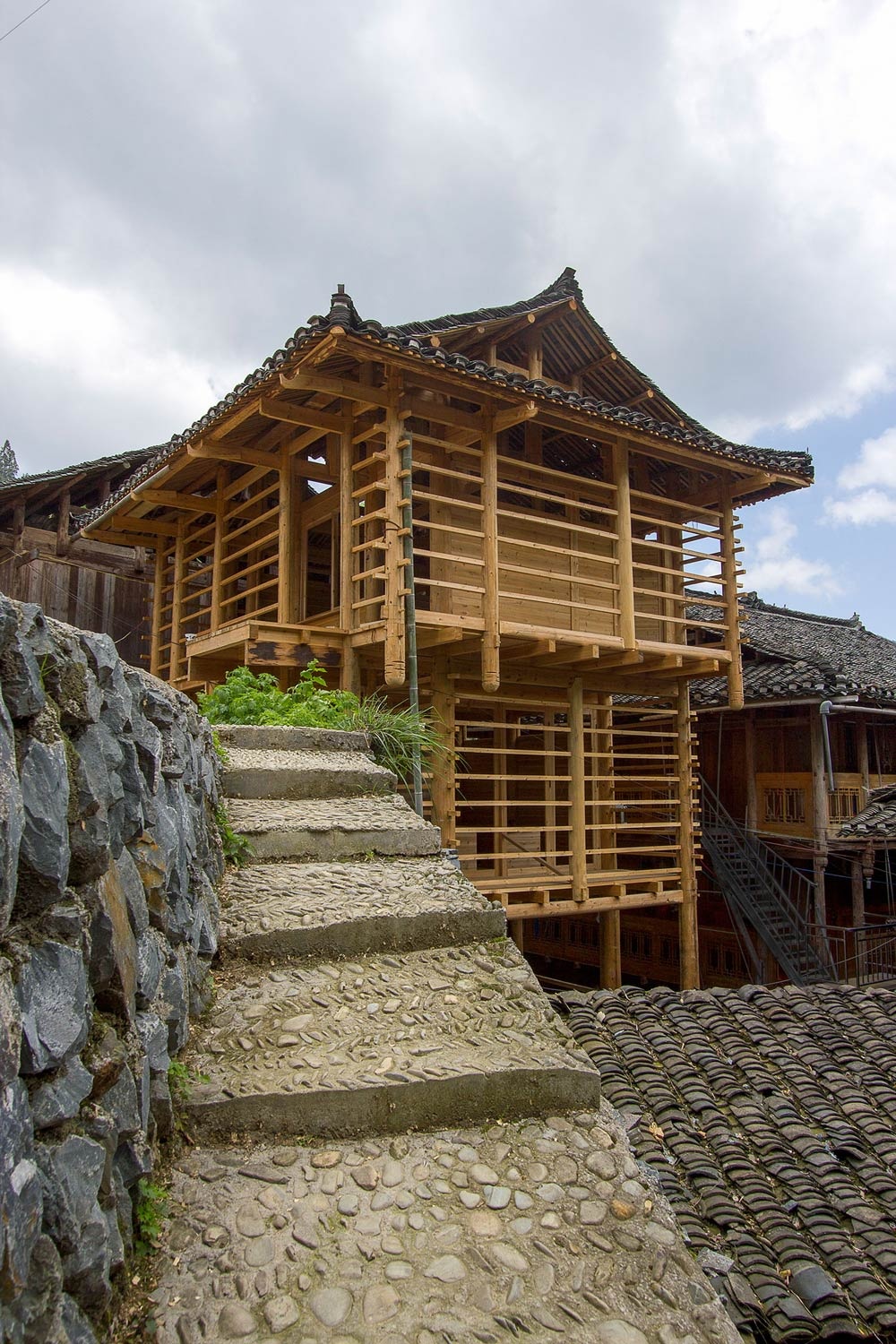
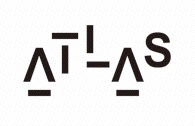
ATLAS is Ahti Westphal, Jenny Chou, Catherine McMahon, Troy Lee, and Bruce Park. Based in Beijing, the studio is rooted in the discipline of architecture but undertakes projects that utilise multiple disciplines of design, as well as research, curation, strategy, and community building. Their shared interest in culture, history, and place leads them to mine various contexts for unexpected stories, details, or overlooked materials and techniques. In addition to an investigation of place, they take a process-based approach to design that aims to capture both marks of time and technique as well as the experimental potentials of materials. Each project the studio takes on is an opportunity to articulate a contemporary narrative that bridges between cultures and contexts.

The Global Heritage Fund is an international not-for-profit dedicated to cultural conservation with headquarters in San Francisco and London. With a vision to look ‘beyond monuments,’ GHF works to partner with local communities and understand that transforming heritage into an economic engine is the surest means of long-term preservation. They believe cultural heritage sites are the root of a people’s history and the bedrock of their future and that their preservation is vital for protecting the rich, shared history of humankind.
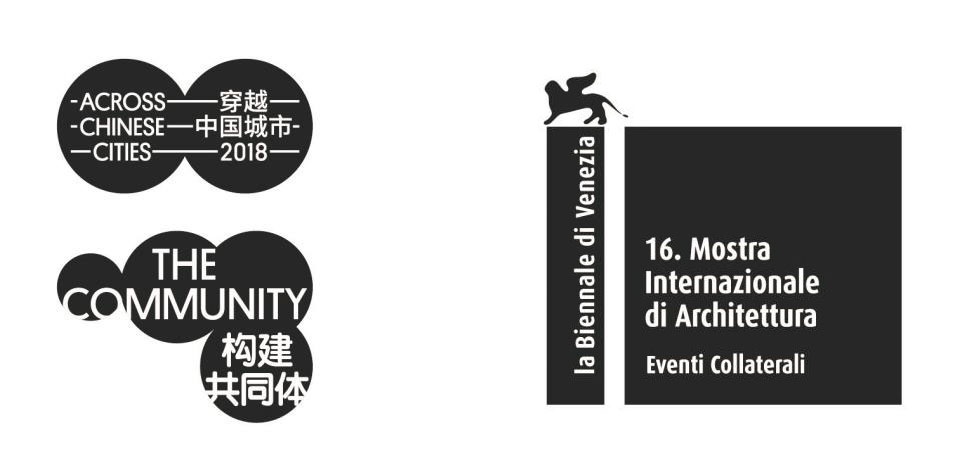
[ The Object Spaces and Rituals of the Collective ]
Collateral Event of the 16 International Architecture Exhibition — La Biennale Di Venezia
Location: Ca’Tron Sante Croce 1957 - 30135 Venezia
Dates: 26 May - 19 October 2018
(May and June) Open Daily 10:00-18:00
(July to October) Open Monday to Friday 10:00-18:00
Closed: August 1-31
For more information, please visit: http://www.acrosschinesecities.org/
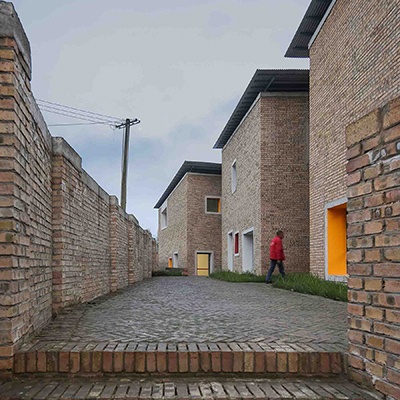
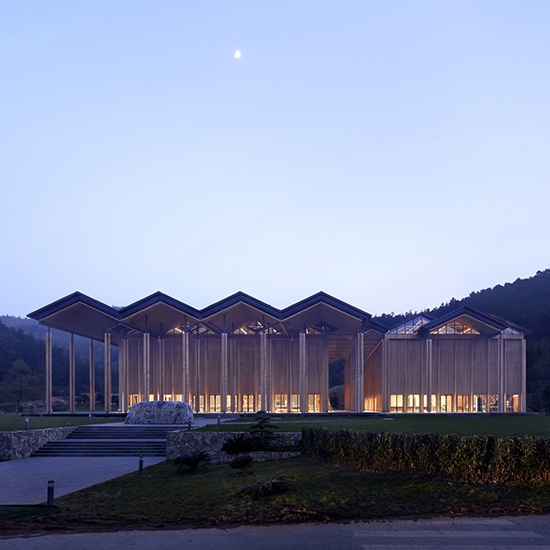
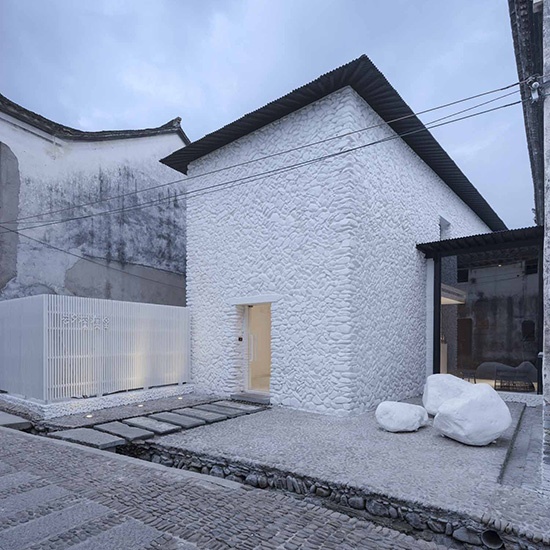
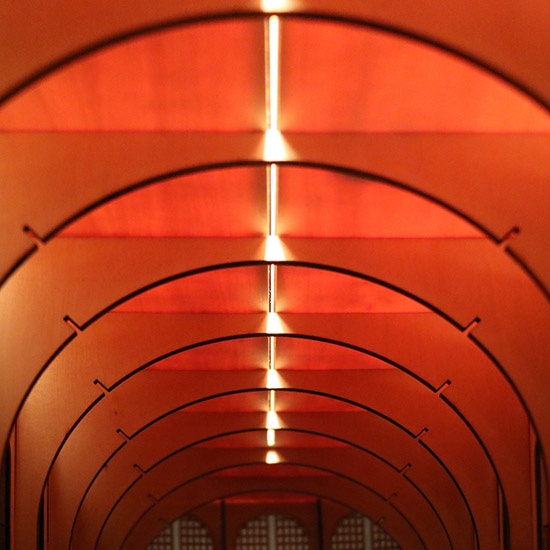
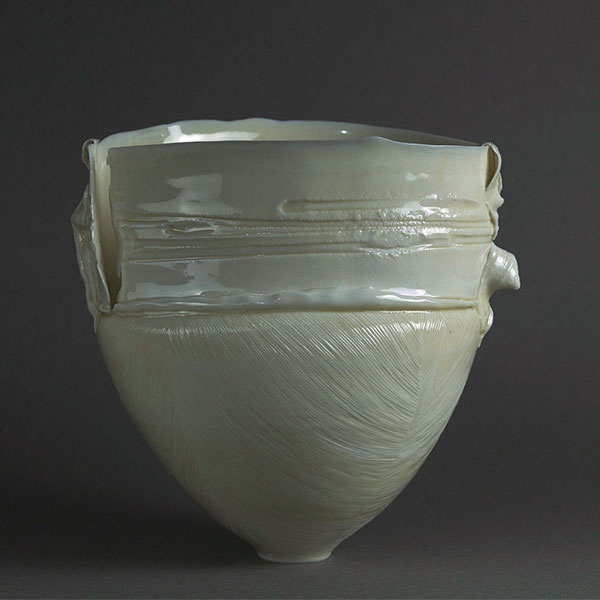
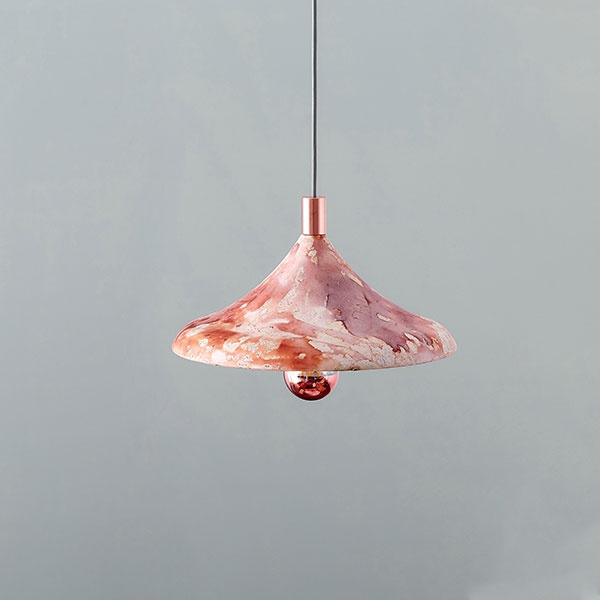
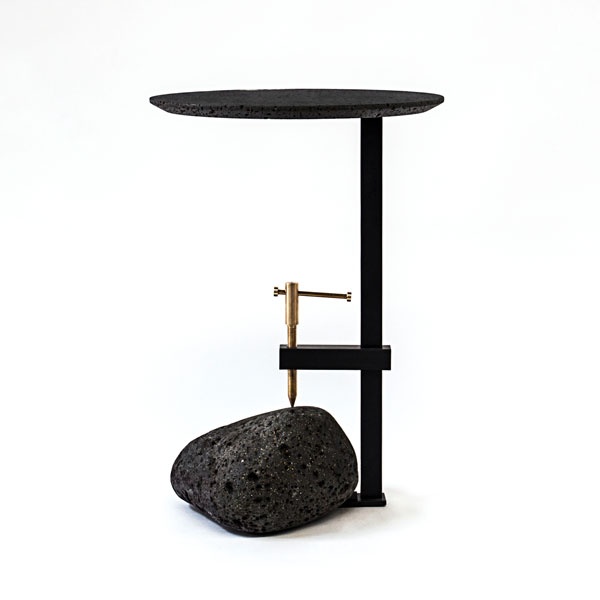
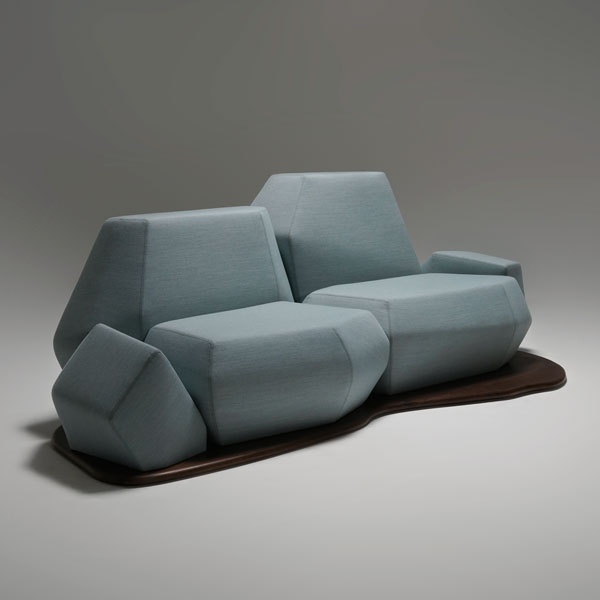

1 / 31
show thumbnailsnext picture previous picture start slideshow close lightbox